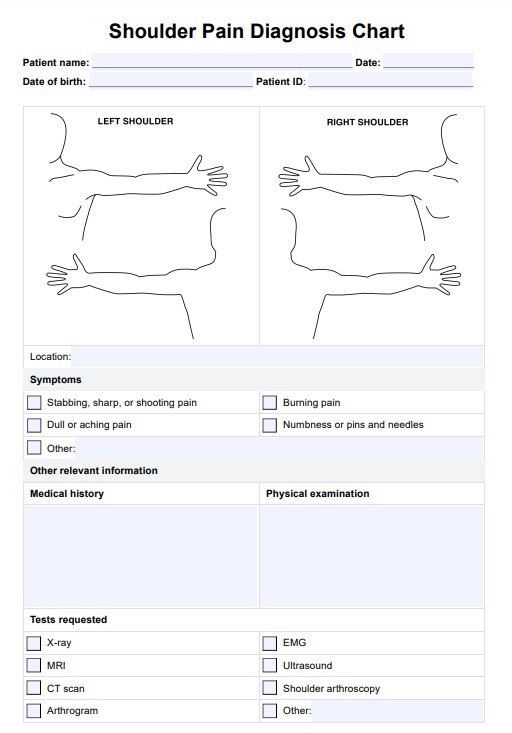Differentiating between muscle and joint-related shoulder pain can be challenging. Muscle pain is often described as a dull ache or soreness, typically aggravated by movement or specific activities. On the other hand, joint pain may present as a sharp, stabbing sensation within the joint itself, often accompanied by swelling, stiffness, or limited range of motion.

Shoulder Pain Diagnosis Chart
Create a visual representation of your patient's shoulder pain and narrow down their diagnoses with our Shoulder Pain Diagnosis Chart.
Shoulder Pain Diagnosis Chart Template
Commonly asked questions
Red flags in shoulder pain refer to warning signs that may indicate severe underlying conditions requiring urgent medical attention. These include shoulder joint pain, chest pain, acute severe pain, suspected fractures, dislocations, infections, unreduced dislocations, suspected malignancy or tumors, acute cuff tears from trauma, suspected inflammatory arthritis, and neurological injuries or deficits.
Identifying the type of shoulder pain involves considering various factors such as the location, nature, onset, aggravating factors, and associated symptoms. A comprehensive medical history, physical examination, and possibly imaging studies can help differentiate between different types of shoulder pain.
EHR and practice management software
Get started for free
*No credit card required
Free
$0/usd
Unlimited clients
Telehealth
1GB of storage
Client portal text
Automated billing and online payments











